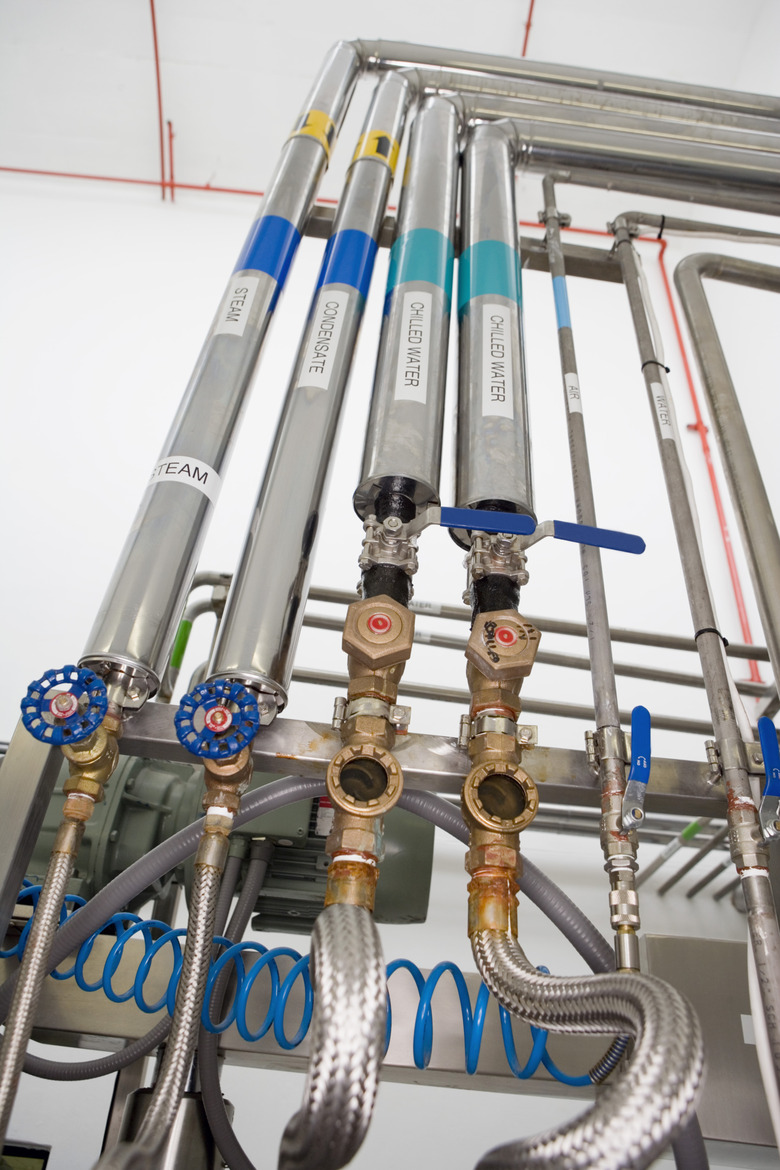How To Size Gravity Drainage Piping
When a pipe drains water under gravity, its size limits the flow rate. Wider pipes can carry more water at any time. The pipe's total capacity also depends on the drainpipe's length, with longer pipes holding more water at once so they can release it. Cylindrical pipes are as wide as they are deep, so you only need one of these measurements and the pipe's height to calculate the pipe's internal volume.
Step 1
Divide the pipe's internal diameter by 2. For example, if the pipe has an internal diameter of 0.1 meters: 0.1 ÷ 2 = 0.05 m This is the pipe's radius.
Step 2
Square this radius: 0.05² = 0.0025 m².
Step 3
Multiply the result by pi, which is approximately 3.142: 0.0025 × 3.142 = 0.007855 m². This is the pipe's cross-sectional area.
Step 4
Multiply this area by the pipe's height. For example, if the pipe spans a distance of 7 meters: 0.007855 × 7 = 0.054985, or about 0.055 m³. This is the pipe's internal capacity.
Cite This Article
MLA
Menezes, Ryan. "How To Size Gravity Drainage Piping" sciencing.com, https://www.sciencing.com/how-8711381-size-gravity-drainage-piping/. 7 August 2017.
APA
Menezes, Ryan. (2017, August 7). How To Size Gravity Drainage Piping. sciencing.com. Retrieved from https://www.sciencing.com/how-8711381-size-gravity-drainage-piping/
Chicago
Menezes, Ryan. How To Size Gravity Drainage Piping last modified March 24, 2022. https://www.sciencing.com/how-8711381-size-gravity-drainage-piping/
